Hardneck or softneck garlic – which one should you grow in your vegetable garden?
The experts explain the differences so you can get your best crop yet
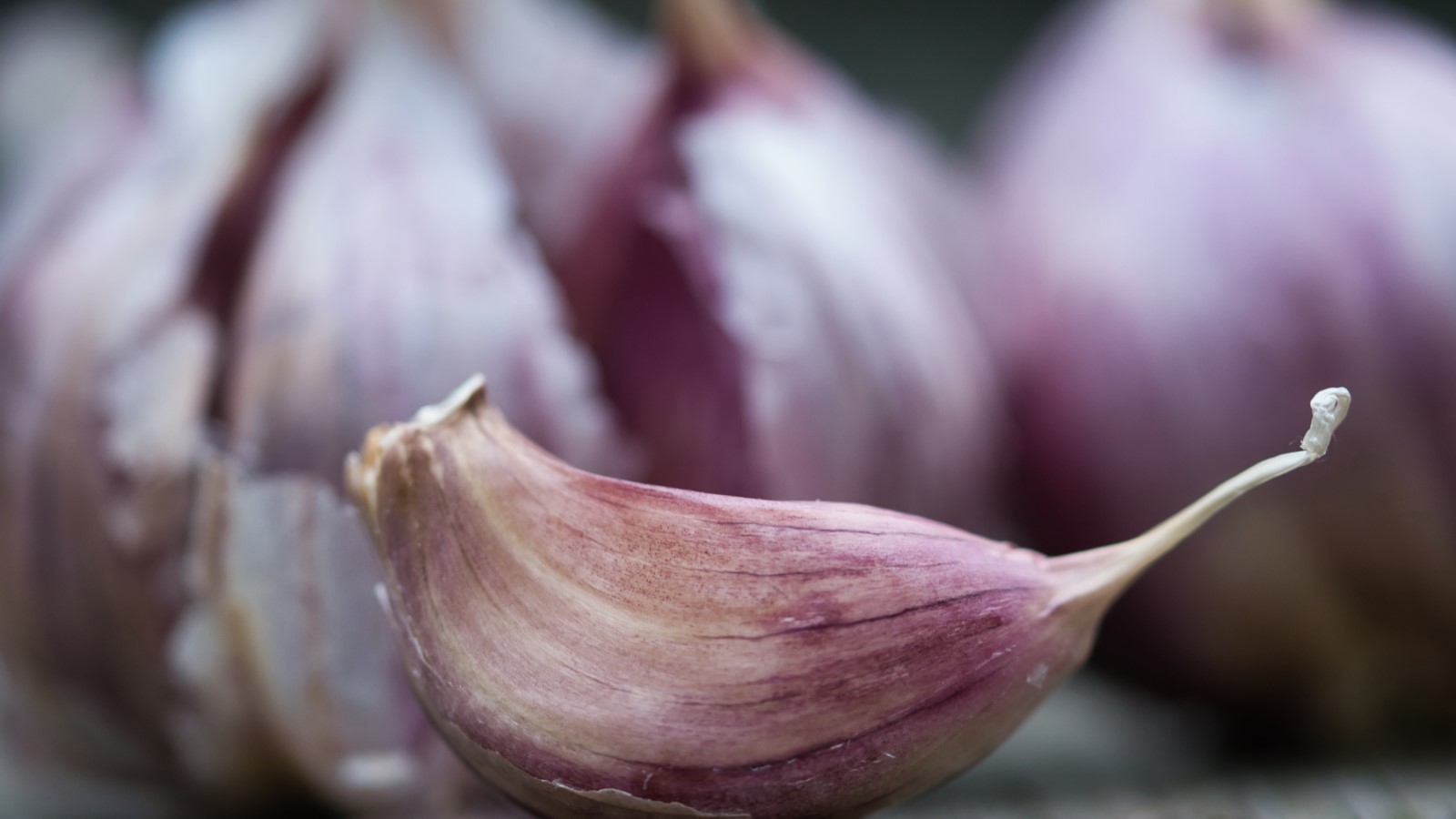

Garlic is a hugely popular crop and offers a wide range of different varieties to choose from. Hardneck and softneck are the main two categories of garlic and their classification by ‘neck’ relates to the development of a flower stalk.
Each of the types has their own characteristics and are suited to different conditions and climates. It's important to know the traits of hardneck vs softneck garlic to decide what is best for you when growing garlic in your vegetable garden.
Whether you chose a hardneck or softneck variety will also dictate when to plant the cloves. Some hardier varieties can over-winter outdoors without an issue, while others are best sown in late winter to avoid them being damaged by long periods of wintry weather.
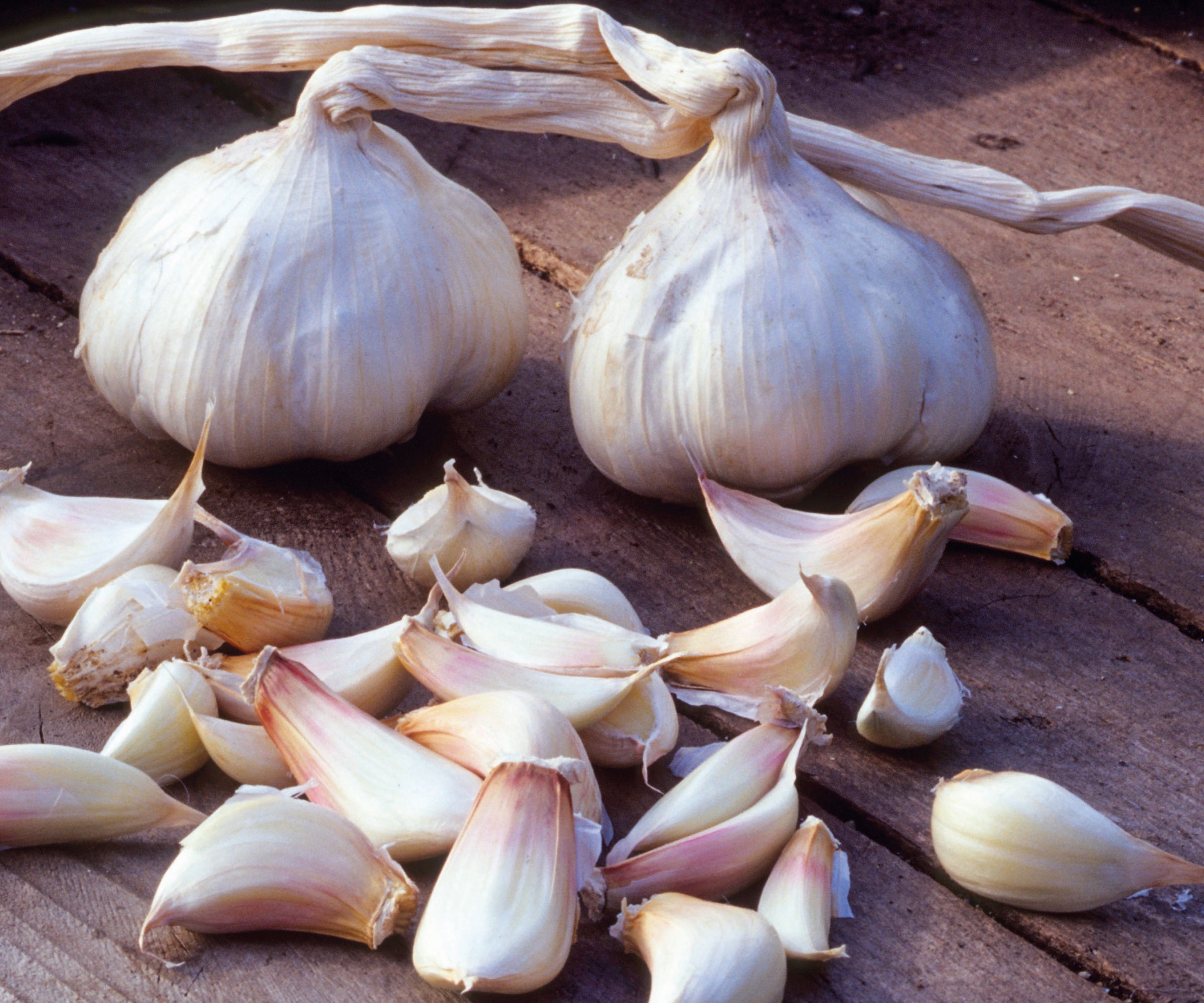
Softneck garlic offers more cloves per head than hardneck

Drew is a former professional kitchen gardener and has worked in several productive gardens growing vegetables for restaurants. Garlic was always a mainstay in the vegetable gardens and he has planted, grown and harvested many hardneck and softneck varieties over the years.
What are the key differences between hardneck and softneck garlic?
Hardneck garlic develops a flowering stem that grows tall and stiff out of the bulb, while the softneck does not produce this kind of rigid stem.
Other ways in which the two groups differ include their bulb formation, storage potential, and flavor. When planning when to plant garlic, it is imperative to remember that the hardiness differs between the two too (more on that below).
There are eight different types of hardneck garlic: Asiatic, Creole, Purple Stripe, Glazed Purple Stripe, Marble Purple Stripe, Porcelain, Rocambole and Turban. Within these there are lots of different cultivars.
There are only two types of softneck garlic, silverskins and artichokes, with a much more limited selection of cultivars to choose from.
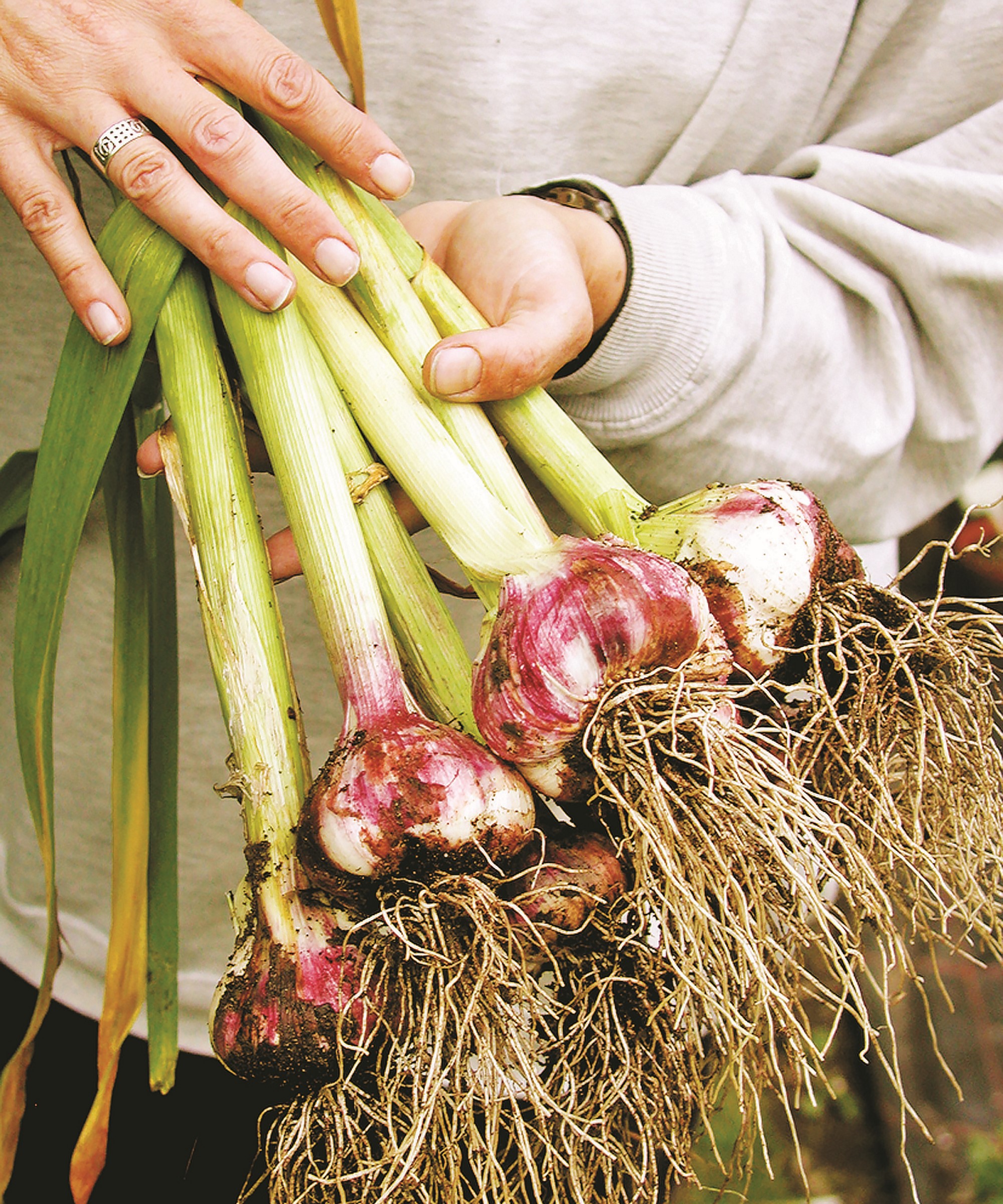
Garlic is harvested after the leaves turn yellow
The benefits of growing hardneck garlic
- It's hardier than softneck varieties and can survive a winter in climates down to USDA zone 0.
- Grows better in colder climates - hardneck garlic needs a period of vernalization (cold weather exposure) of at least 40 days at or below 40˚F. Failure to get this will result in one small bulb, rather than a head with many.
- It produces an edible tall flower stalk called a garlic scape – these are a delicacy.
- Produces fewer cloves per head, but the cloves are larger than softneck varieties.
- Peels easier due to its thicker and more brittle skin.
- Boasts a complex and more powerful flavor than softneck garlic.
- There are more options available to the growers. Reputedly hundreds of hardneck varieties are available – there are plenty to be found on Amazon and more specialist sites such as Burpee.
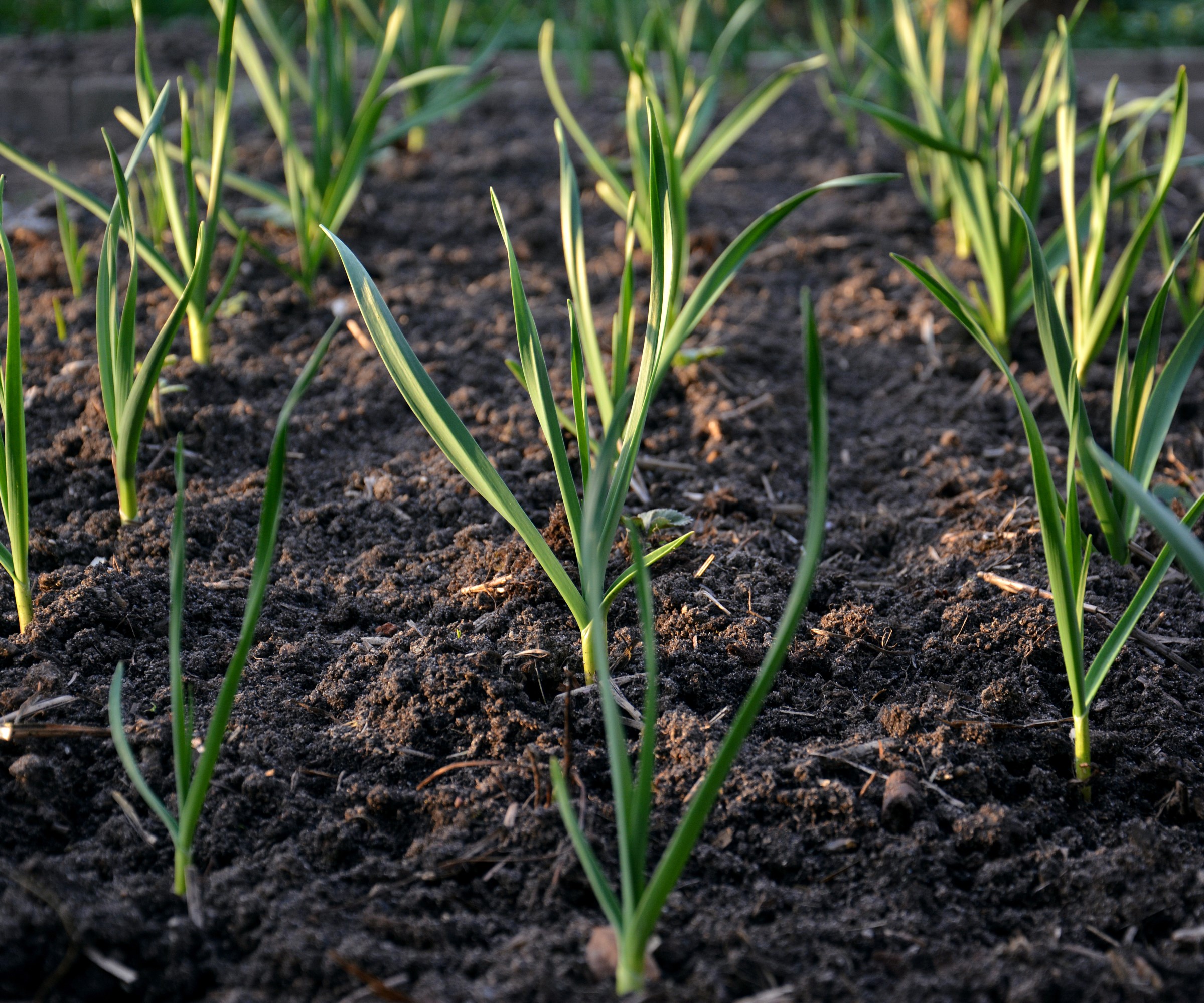
Garlic has a very long growing season in the ground
The benefits of choosing softneck garlic
- Softneck garlic is better suited to milder climates – does not require a period of cold to produce bulbs.
- Thrives better than hardneck in warmer climates.
- Suits planting in spring as less tolerant of long cold periods.
- Produces smaller cloves in higher numbers than hardneck – between 8 to 20 per head.
- Matures quicker than hardneck varieties.
- Softneck garlic is more like the garlic regularly bought in grocery stores.
- Less pungent than hardneck garlic.
- Although there are fewer options available than hardneck varieties, it's still readily available to buy at Amazon and Burpee.
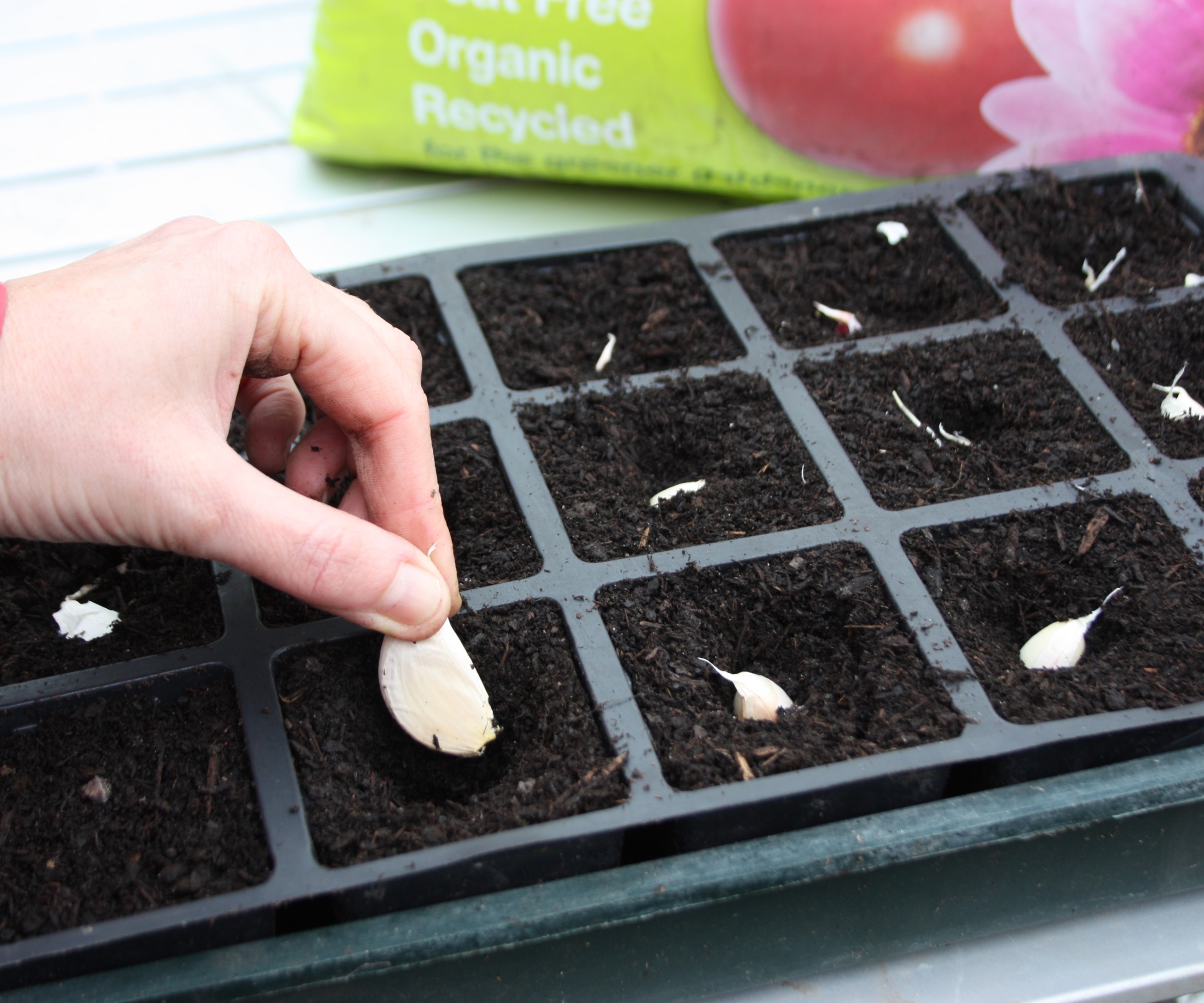
Garlic cloves can be started indoors in trays
Does hardneck or softneck garlic store better?
One of the factors worth considering when choosing between hardneck vs softneck garlic is their storage ability.
Softneck garlic stores for longer than hardneck, as it has denser heads that are tightly wrapped. That gives a twofold advantage. It both prevents any disease getting into the head and also preserves any moisture in there.
Knowing how to store garlic properly is a very useful skill for a grower to have. When cured and stored well – either braided and hung, or with heads removed and stored in a dark and well-ventilated place at 50-60˚F – softneck garlic can be stored for nine to 12 months. Hardneck varieties tend to only have a storage life of between three and five months.
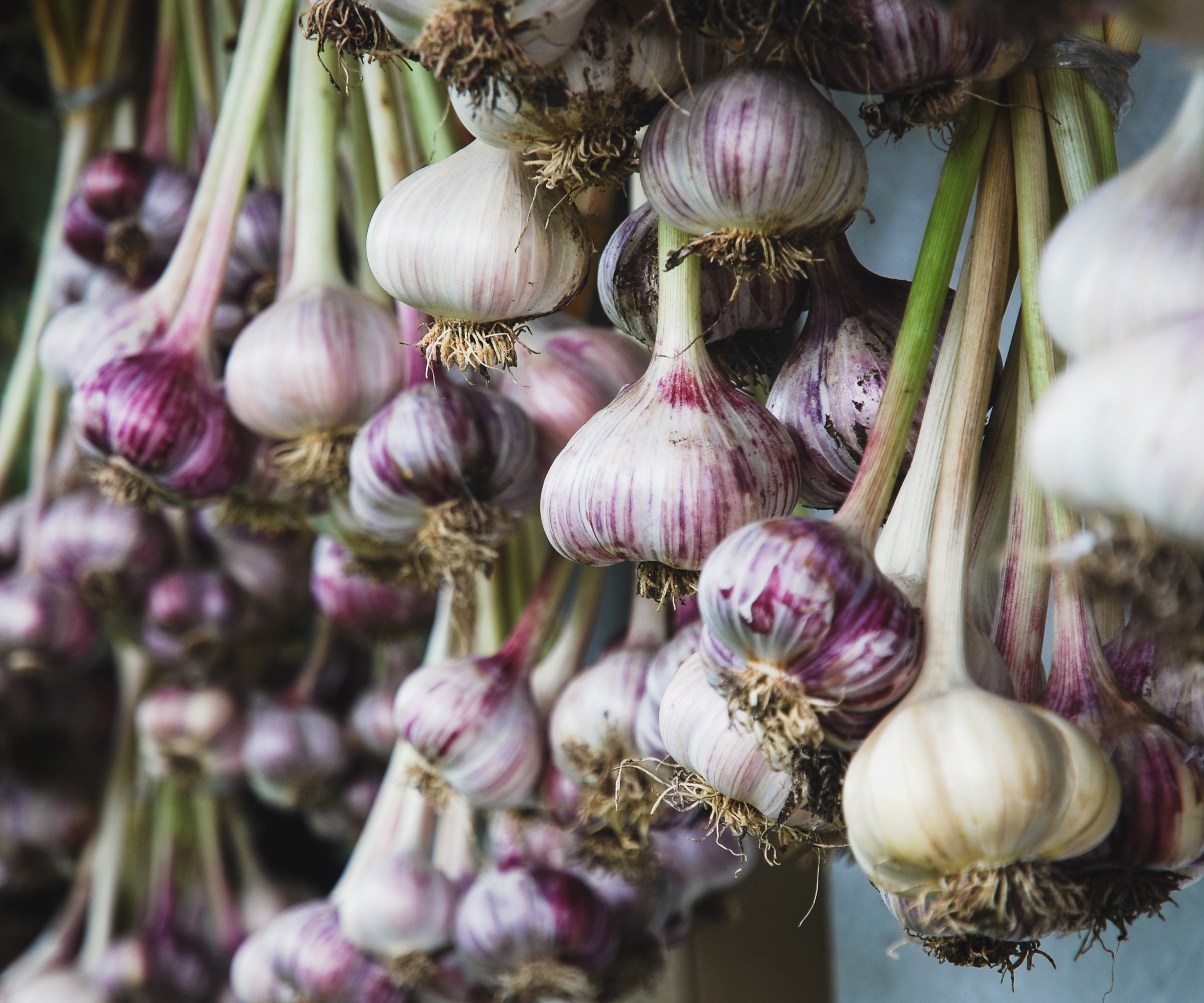
Hanging garlic is a popular method of storing a crop
Is hardneck or softneck garlic the better option to grow?
Once you know the pros and cons of each type, the main factor that comes into play when choosing between the two will be location. Your zone might dictate what you can successfully grow. As mentioned, the hardneck varieties are more cold-tolerant and favorable for gardeners in northern areas. Softneck varieties prefer warmer climates and are therefore a better choice for growers in USDA zones 8-12. There are some zones that can be suitable for both, providing they can give hardneck varieties the 40 days of cold they require.
Lindsey Hoyland, founder of Urban Organic Yield, recommends putting in some time researching the best garlic for your area. 'When choosing which variety to grow, consider your climate first then shop around for the specific varieties that will best suit your environment's conditions,' she says. 'With either type you should expect several months of harvest time throughout late spring into summer once planted in the right conditions.'
Garlic has a long growing season and can take up to 10 months from planting to harvesting. If you plan ahead and schedule into your calendar when to harvest garlic, you can get an extended harvest time by utilizing both types. Zone-dependent, you can plant hardier hardneck varieties in fall to over-winter and then follow this with softneck garlic planted in the spring. This will give you a bumper crop.
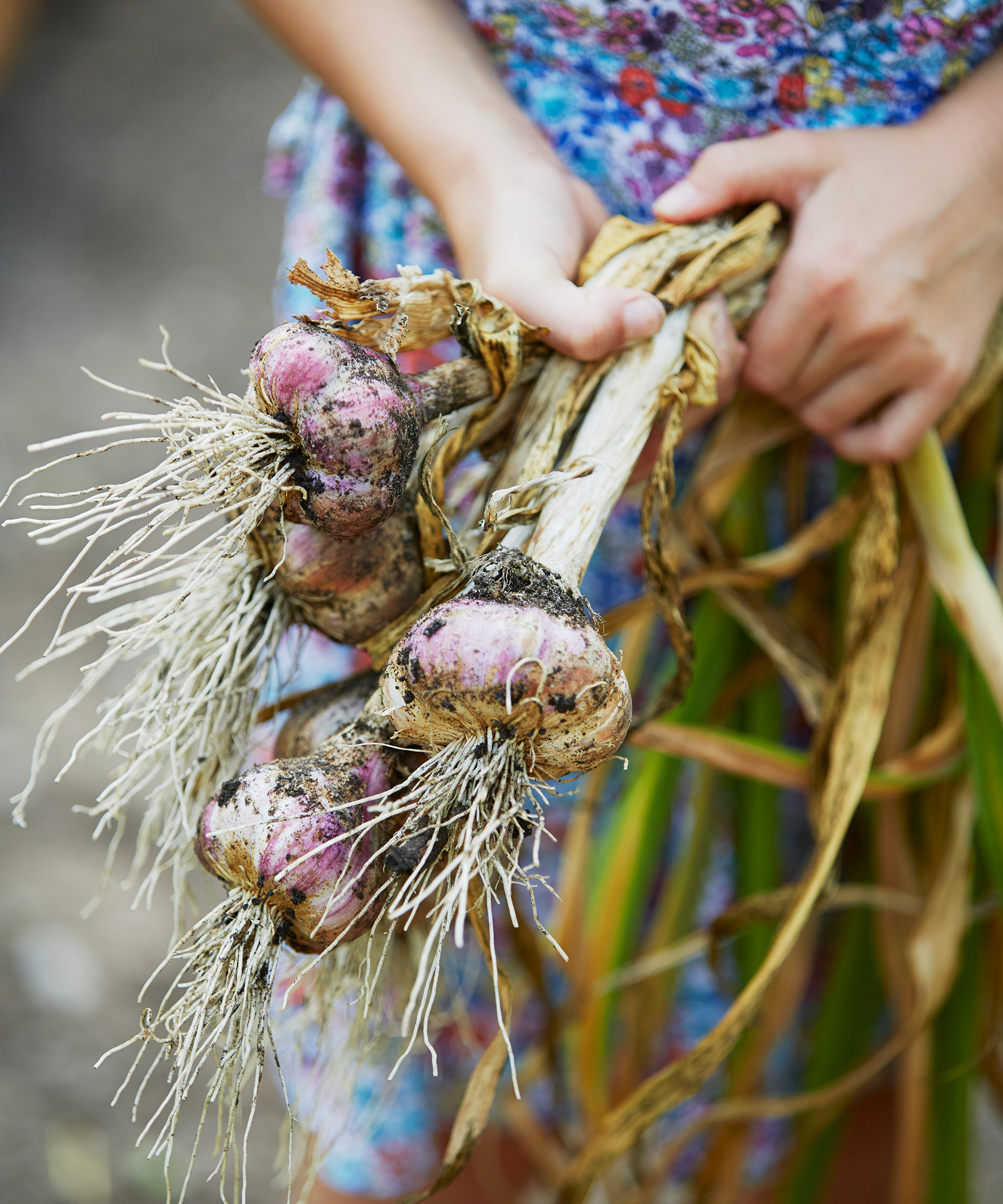
By planting different types of garlic you can get a longer harvest
Growing hardneck types also come with an extra bonus crop of garlic scapes (the edible tall flower stalk). Fresh garlic scapes are often turned into pesto, pickled, or sauteed as part of vegetable or meat dishes. Removing these scapes is an important task to take into consideration when deciding what variety to grow, but the fact they are a delicacy means it is not a chore. Judy DeLorenzo, from A Life Well Planted, is a big fan of ‘delicious’ garlic scapes and explains why taking time to deal with them is such a vital job.
'The scapes spring up from the center of each plant, and if left to grow, they form a flower and then a seed pod. If harvested, the plants send all of their energy into growing nice fat garlic bulbs, rather than into the production of flowers and seeds,' she says. 'The result is larger bulbs by the end of the growing season, in addition to an early season crop of delightful scapes.'
The flavor you aspire for and how you plan to use the garlic are also going to be considerations. If you want a more robust flavor, then hardneck is going to be your best choice. However, if it is a milder garlic that stores better that you are after – it is a softneck that ticks those boxes. There are a plethora of options available, but it need not be daunting. Do a little bit of research, take into consideration your location, whether you are growing garlic in pots or in the ground, and you will find there is garlic out there to suit any vegetable garden.
Sign up to the Homes & Gardens newsletter
Design expertise in your inbox – from inspiring decorating ideas and beautiful celebrity homes to practical gardening advice and shopping round-ups.

Drew’s passion for gardening started with growing vegetables and salad in raised beds in a small urban terrace garden. He has worked as a professional gardener in historic gardens and specialises in growing vegetables, fruit, herbs, and cut flowers as a kitchen gardener. That passion for growing extends to being an allotmenteer, garden blogger, and producing how-to gardening guides for websites. Drew was shortlisted for the New Talent of the Year award at the 2023 Garden Media Guild Awards.
-
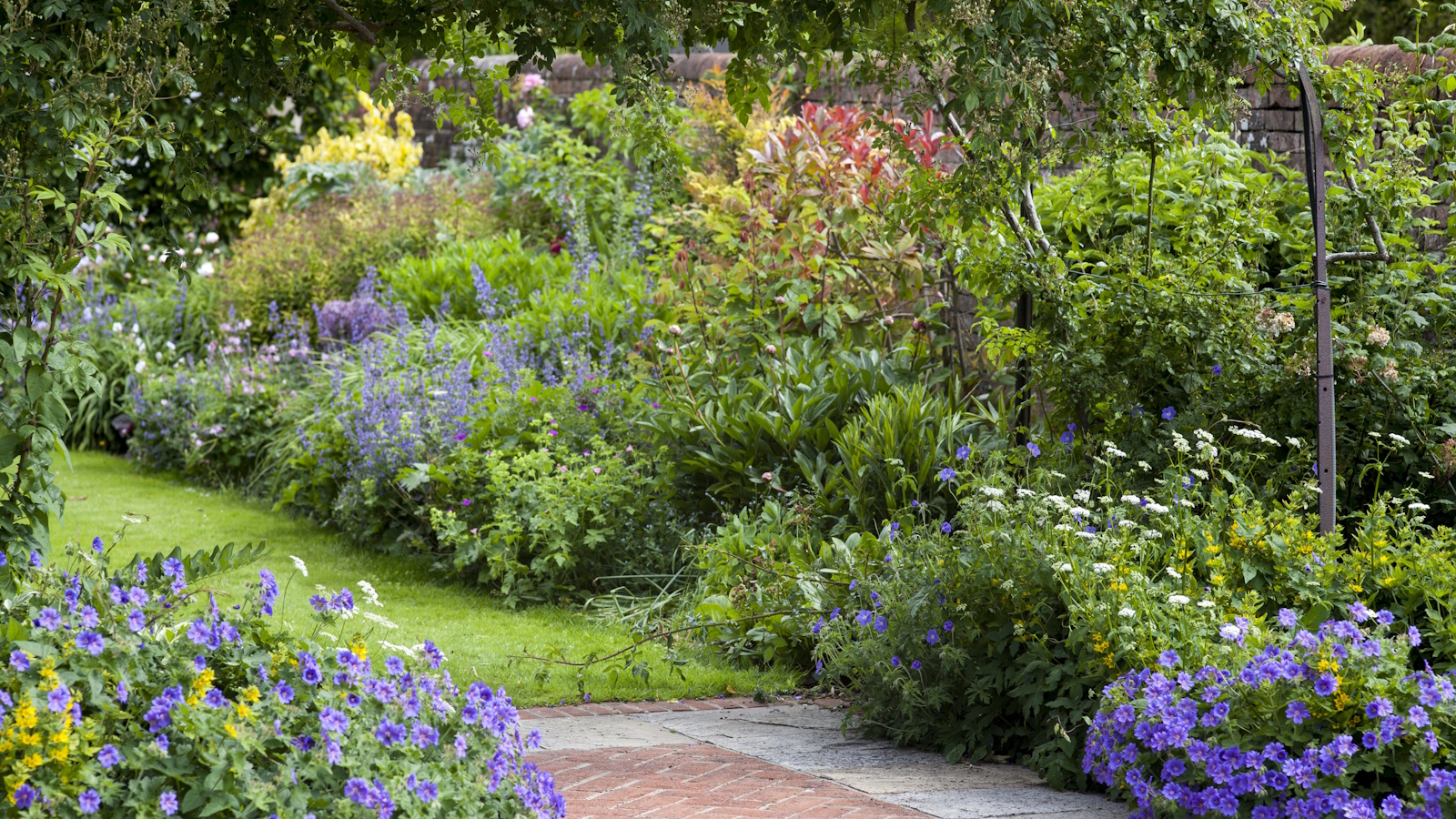 Is the viral salt hack the secret to a weed-free patio? A garden expert warns of irreparable, long-term damage – plus reveals the safest way to get results
Is the viral salt hack the secret to a weed-free patio? A garden expert warns of irreparable, long-term damage – plus reveals the safest way to get resultsYou might have seen gardeners on TikTok or Instagram using salt to kill weeds in pavers, but this hack should be avoided at all costs
By Thomas Rutter Published
-
 9 longest-living houseplants – expert recommendations and tips for species that can live over 10 years
9 longest-living houseplants – expert recommendations and tips for species that can live over 10 yearsInvest in these houseplants now for years of luscious foliage in your home
By Tenielle Jordison Published